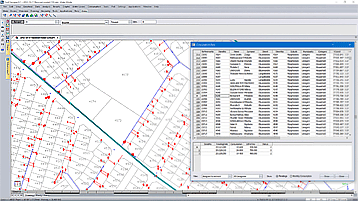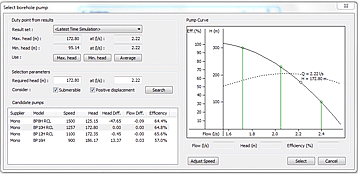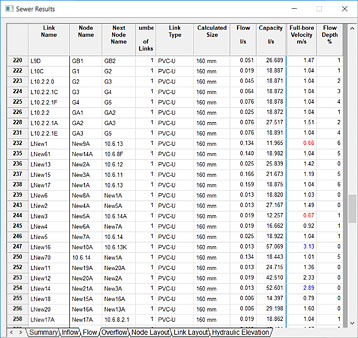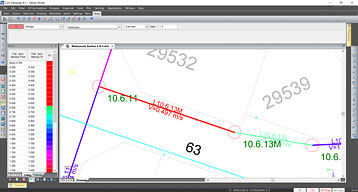Water and foul water network design can no longer simply rely on empirical draw-offs and flows as stringent water restrictions become more common, changing
water consumption patterns and the resultant sewerage flows. Affected municipalities are now forced to keep a close eye on their pressurised and gravity-based pipe networks.
One way to control water usage is to reduce the supply water pressure. However, this is not a simple matter as the reduced supply pressure does not result in a uniform reduction of pressure across the network. Ideally, water networks should be re-analysed to ensure that adequate discharge is still possible at outlying draw-off points and that essential water pressure is maintained to fire hydrants, hospitals and other emergency services. Furthermore, reduced pressure can lead to vacuum conditions that draw contaminants into the system posing a significant health risk.
|
Simulating water networks with actual data
CIVIL DESIGNER's Water module addresses these challenges by allowing the engineer to analyse draw-offs using the available pressure at specific points in the network. It
can also model the impact of reduced usage by importing actual consumption data. The water network can now be re-analysed to simulate the impact of the restricted supply and reduced consumption, and the design can be optimised accordingly.
| |
 |
|
Consumption Data Table (click to enlarge) |
|
The ability to handle billed consumption data is also useful for predicting trends. Data can be graphically presented for both the daily total and daily use per connection over a given period.
|
Incorporating borehole hydraulic modelling
As water restrictions become commonplace, the contribution of alternative water sources to urban and rural supply networks must also be considered.
Although boreholes are commonly used to supplement water supply, they are poorly represented in the world of hydraulic modelling solutions.
CIVIL DESIGNER includes borehole modelling functions that allows the designer to easily define and model a borehole column, shaft and pump within a graphical interface and view the borehole performance quickly and easily.
Identifying potential foul water system failures
Reduced consumption also results in reduced foul water flows. The most commonly adopted specification for foul water networks is to ensure a minimum velocity of 0.7m/sec with flow at one-half full or full depth. This mean velocity is sufficient to prevent the deposition of solids. Where effective cleansing velocities no longer occur, sewerage cannot be effectively transported from houses and commercial buildings to treatment facilities. The resulting solid deposition, blockages and sewerage overflow can result in the spread of serious diseases.
CIVIL DESIGNER's Sewer module allows the engineer to reduce simulated inflow volumes in a given network and then re-analyse the model to pin-point potential blockage locations. The designer may pre-define a colour gradient to flag links that fall below the specified
minimum mean velocity. A failing link, with a velocity of less than 0.7m/s, is shown in red in the screenshot.
|
|
 |
|
Borehole hydraulic modelling |
 |
|
Output showing sewer link flow rates |
 |
|
Failing sewer link is flagged in red |
|
CIVIL DESIGNER offers essential capabilities to municipal and consulting engineers including comprehensive and accurate modelling tools that allow them to predict potential supply shortfalls, optimise water networks affected by water restrictions, and prevent the serious consequences of foul water network failures.
|